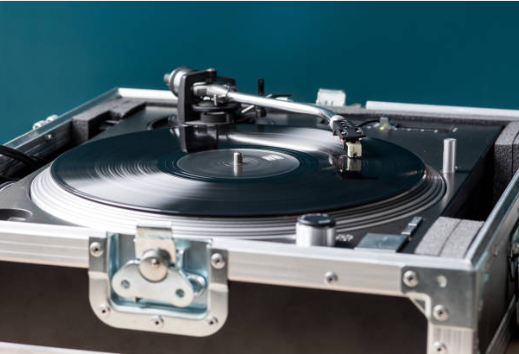Flight cases, those sturdy and reliable containers that we see being used across various industries today, have a fascinating origin story. The question of when flight cases were invented takes us back to a time when the need for secure and durable transportation of valuable equipment was on the rise.

The Emergence in the 1950s
The term "flight case" has been around since the 1950s. It is generally believed that flight cases were first developed in the United States, and their original main use was in the music industry. In that era, bands often traveled long distances between different venues, often by plane. The hardships of travel, and the need to protect instruments and equipment from damage, led to the creation of flight cases.
The basic design of these early flight cases consisted of a plywood panel with aluminium edges and steel corners/fittings. The plywood was faced with materials like ABS, fibreglass, or high - pressure laminate. The use of a riveted corner angle extrusion was common. This design provided a certain level of protection, but it was also relatively heavy.
Early Development and Expansion
As the concept of flight cases took hold, they started to be used in other sectors as well. Their strength and durability made them suitable for transporting delicate and valuable items. In the United States, the Air Transport Association (ATA) specification 300 began to be used as a standard for these cases. This helped in standardizing the construction and quality of flight cases, ensuring that they could withstand the rigors of air travel.
In Europe and the United States, for military applications, there were various DEF STAN and MIL - SPEC standards. These standards were even more stringent as they had to account for the transportation of sensitive military equipment under harsh conditions. The military's need for highly reliable cases further contributed to the development and improvement of flight case technology.
Types of Flight Cases
1. Standard Flight Case: This is the most common type, usually manufactured in accordance with the ATA 300 standard. It has a basic protective structure and is suitable for the transportation of most conventional equipment, such as common audio equipment, small stage props, etc. It comes in a variety of size specifications, which can meet the loading requirements of items of different volumes.
2. Customized Flight Case: It is designed for some equipment with special shapes, irregular sizes or special protection requirements. For example, a flight case made for a specific large-scale sculpture work will have its internal partitions and external structure customized according to the shape of the sculpture to ensure stability and safety during transportation.
3.Waterproof Flight Case: It uses special sealing materials and processes, which can effectively prevent the intrusion of water. In the film and television shooting industry, it is often used to protect photographic equipment during transportation near water or in a humid environment. In outdoor exploration and scientific research, it can ensure that the instrument equipment is not affected by rain in bad weather.
4.Shock-resistant Flight Case: It is equipped with high-performance shock-absorbing and buffering materials inside, such as special foam linings, rubber shock pads, etc. It is often used to transport precision instruments that are sensitive to vibration, such as parts of magnetic resonance imaging equipment in the medical industry, high-precision chip manufacturing equipment in the electronics industry, etc.
Widely Applied
1. Music Performance Industry: From musical instruments to audio equipment, flight cases are essential equipment for music performance teams. String instruments such as guitars and basses need to be protected by flight cases during long journeys to various performance venues to ensure that the intonation and appearance of the instruments are not damaged. Each component of a large-scale audio system, such as power amplifiers and speakers, also relies on flight cases for safe transportation to ensure the smooth progress of the performance.
2. Film and Television Production Industry: Film and television shooting equipment, such as cameras, lens sets, and lighting equipment, are expensive and precise. Flight cases provide reliable protection for these devices. Whether shooting in urban blocks or going to remote areas for location shooting, they can ensure that the equipment arrives at the shooting site safely, avoiding the impact on the shooting quality due to collisions and vibrations during transportation.
3. Medical Industry: The transportation of medical equipment must ensure a high level of safety and stability. For medical devices like surgical instruments and precise diagnostic instruments, when they are allocated between different hospitals or sent to medical exhibitions, flight cases can effectively prevent the equipment from being damaged during transportation, ensuring the normal operation of the equipment and providing a guarantee for the smooth progress of medical work.
4.Industrial Manufacturing Industry: In industrial production, some high-precision molds and components cannot afford the slightest damage during transportation. Flight cases can provide reliable protection for these industrial products. Whether it is the transfer within the factory or the delivery to customers in other places, they can ensure that the product quality is not affected.
5. Exhibition Industry: At various exhibitions, the exhibits of exhibitors often need long-distance transportation and frequent handling between different venues. Flight cases can protect the exhibits well, keeping them intact during transportation and exhibition setup. Whether they are exquisite artworks, advanced technological products, or unique commercial samples, they can all be safely delivered to the exhibition site through flight cases, attracting the attention of the audience.
Conclusion
In conclusion, flight cases were invented in the 1950s in the United States, primarily for the music industry's needs. Since then, they have undergone a remarkable evolution, with improvements in design, materials, and construction. Their use has expanded far beyond the music industry, becoming an essential part of numerous sectors. Whether it's protecting a valuable musical instrument on a world tour or safeguarding high - tech scientific equipment during transportation, flight cases continue to prove their worth, and their story is one of continuous adaptation and innovation.
Post time: Mar-26-2025






